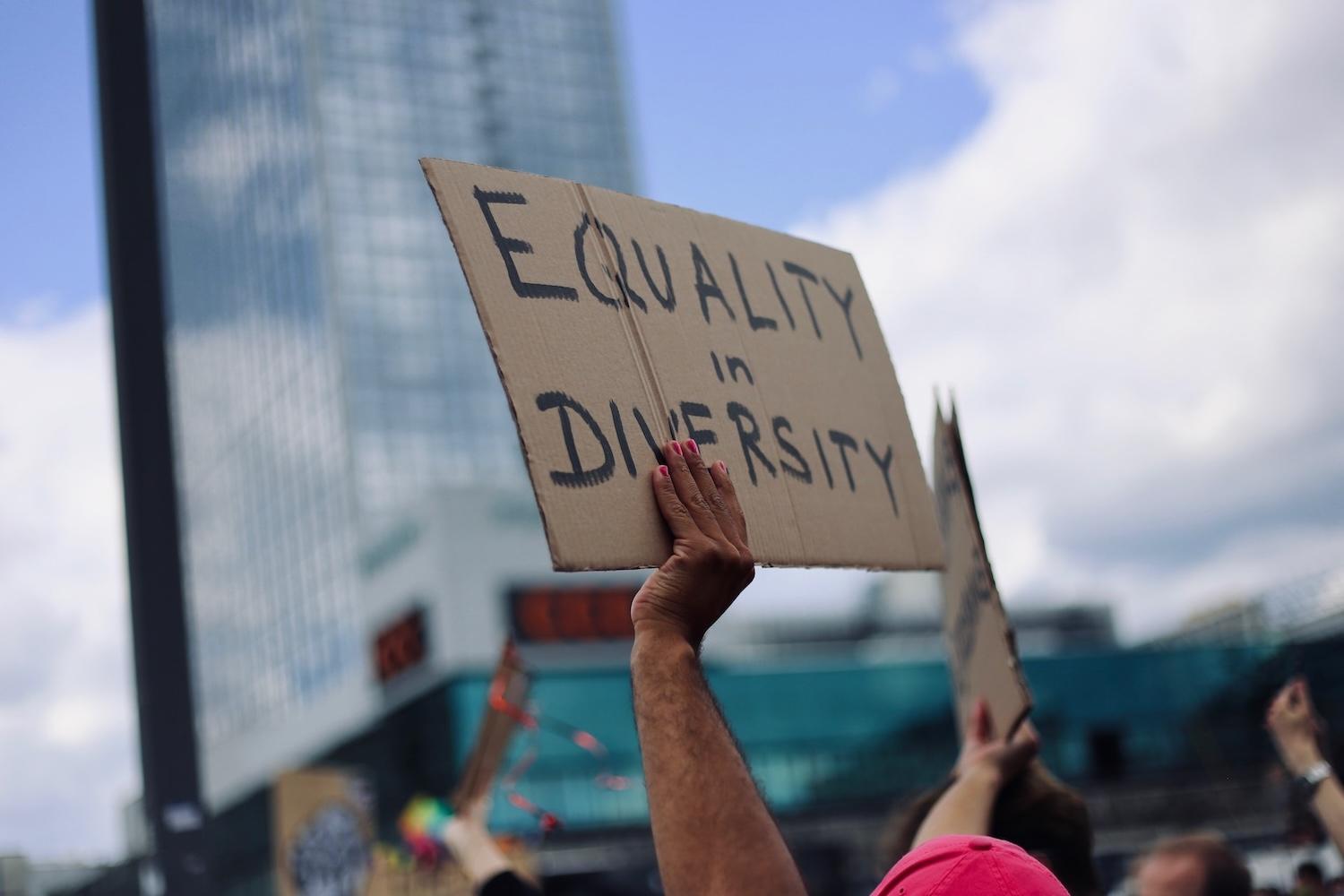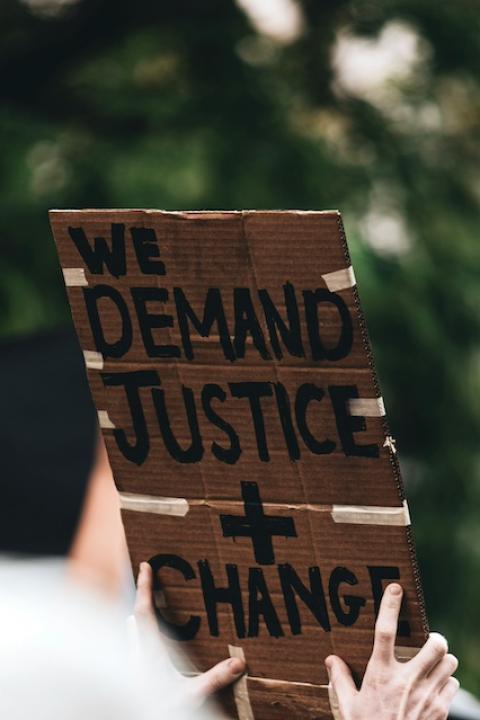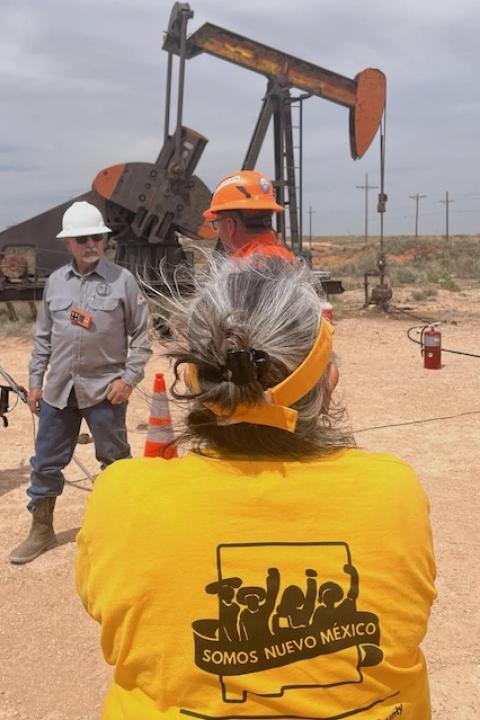
People hold signs at a demonstration in 2020. This form of public protest has largely given way to a wave of quiet employee activism in support of diversity, equity and inclusion (DEI) policies across U.S. workplaces. (Image: Amy Elting/Unsplash)
Advocates for corporate diversity, equity and inclusion (DEI) policies are finding support from a new wave of employee activism, in which workers deploy quiet strategies to press for progress from the bottom up. Business leaders who value a diverse workforce can learn from these creative organizers and improve their ability to attract and retain top talent from all walks of life.
The importance of institutionalizing diversity and inclusion
Diversity hiring has acquired a strong track record for delivering financial results. The well-known human resources expert Josh Bersin recently summarized the state of affairs in a 2021 white paper titled, “Elevating Equity: The Real Story of Diversity and Inclusion.”
“In fact, we won’t even debate the fact: More than 200 studies show how diversity in business leads to greater levels of innovation, customer service, employee engagement, and long-term growth,” Bersin wrote.
However, achieving and maintaining a diverse workforce is a complex task. There are no shortcuts. Bersin, for example, underscored the importance of following up diversity hiring with ongoing programs that support inclusion and employee satisfaction.
The case for managerial responsibility
Despite the informed views of Bersin and other experts, though, DEI shortcuts have become commonplace. Businesses routinely call upon vendors to conduct one-off employee training sessions, rather than making DEI programs a permanent fixture within the organization.
Although they're popular, DEI shortcuts are known to be ineffective. For example, a widely cited 2006 study found that sporadic DEI training sessions mostly fail to change behavior or improve diversity hiring. The authors advocated for ongoing policies that are institutionalized within the company.
In particular, the team of 21 academic researchers from Harvard, MIT and other institutions emphasized that managers must be made responsible for diversity hiring. Members of the same team made a similar case in a 2018 article, in which they advocated for DEI programs that focus on managerial engagement rather than legalistic mandates.
“The antidiscrimination measures that work best are those that engage decision-makers in solving the problem themselves,” they wrote.
DEI is on the ropes, but employees still care
As Bersin noted in 2021, many businesses did hire dedicated DEI staff and increase their commitment to DEI programs after the murder of George Floyd in 2020. However, much has changed since then. One big change this year is a wave of layoffs targeting corporate DEI staff, especially within the tech sector.
Sustained, multi-level attacks on corporate ESG (environmental, social and governance) principles have also muted the willingness of companies to discuss ESG goals and related social issues.
In addition, the dramatic, attention-getting street protests that characterized employee activism during the Donald Trump administration have largely faded from the media spotlight. That has eased the pressure on corporate leaders to respond to social issues.
However, pullback on DEI policies at the top of the corporate ladder does not necessarily reflect employee sentiment. Studies show that employees continue to value DEI programs at work.
A Pew survey last spring, for example, found that 56 percent of employed adults say that DEI programs at work are mainly “a good thing. Pro-DEI sentiment is stronger among women, at 61 percent, as well as younger workers ages 18 to 29 (68 percent), and those identifying themselves as Democratic (78 percent), Black (78 percent), Asian (72 percent), or Hispanic (65 percent), the study found.
These numbers provide support for companies to continue deploying DEI policies that attract employees beyond the traditional hiring pool, and to reach out to an increasingly diverse and socially aware workforce.
DEI from the grassroots up
The Pew findings also indicate that business leaders who drop the ball on DEI may encounter pushback from their own employees. Researchers who study employee activism have in fact noticed that employees are institutionalizing DEI goals among themselves.
Greater Good Magazine, a publication of the Greater Good Science Center at the University of California – Berkeley, outlined this employee-centered trend in an October 30 article titled, “How to Keep Diversity, Equity, and Inclusion Initiatives Alive at Work."
The authors, Columbia University professor Peter T. Coleman and University of San Francisco assistant professor Allegra Chen-Carrel, both work as DEI consultants for large employers.
In the article, they describe an emerging trend in which employees are driving the DEI conversation. “Internal activism is on the rise, with four in 10 of all employees and half of millennials reporting that they had spoken out about controversial issues at work,” they reported.
They observed employees taking lowkey pathways to foster change, such as building support networks among themselves, while managers are choosing to practice diversity hiring in the absence of strong corporate leadership.
Keeping up with the fast pace of lowkey employee activism
In their article for Greater Good, Coleman and Chen-Carrel provide employees with a toolkit for lowkey activism while urging employers to become more alert to employee issues and concerns.
Creating an opportunity for mediation is one key piece of guidance. “This can involve something as simple as offering opportunities for coworkers and managers to share their concerns by simply taking time to listen, ask questions, and acknowledge problems,” Coleman and Chen-Carrel advise.
They also take note of employee-driven, self-care strategies that could be incorporated into a company’s wellness programs, such as relaxation exercises and time for self-education on broader social issues.
For employers, affirmative action plans, diversity committees, employee surveys and other data collection methods, and annual reporting are listed among the action steps.
Further, DEI leadership requires companies to identify and change harmful corporate practices, provide more support for effective practices, adapt to change, and respond proactively to tense situations, Coleman and Chen-Carrel argue.
“When destabilizing events occur, such as scandals, mergers, leadership changes, or even wider social movements such as Black Lives Matter or #MeToo, there can be energy and momentum for organizational change,” they write.
All of this involves an investment of corporate resources. Nevertheless, the long-term payoff can be significant in terms of avoiding costly lawsuits as well as attracting top talent and building a positive brand profile.
Filling the gaps
To be clear, progress on diversity within corporate walls can only go so far. In his 2021 white paper, Bersin took note of a sharp backslide on civic governance in the U.S. since the 1970s. He cited a weakening of equal access to housing, voting rights and business opportunities among the evidence. Equal access to education and health care can also be added to the list, in light of recent decisions by the U.S. Supreme Court.
To the extent that these attacks on human and civil rights impact employees, the pressure for change in the workplace will continue to rise. Companies with active, institutionalized DEI policies are in a good position to turn that tension in a positive direction. As for companies that have pulled back on DEI, they may need to rethink their position before the tension boils over.
Homepage image: Tim Mossholder/Unsplash

Tina writes frequently for TriplePundit and other websites, with a focus on military, government and corporate sustainability, clean tech research and emerging energy technologies. She is a former Deputy Director of Public Affairs of the New York City Department of Environmental Protection, and author of books and articles on recycling and other conservation themes.













